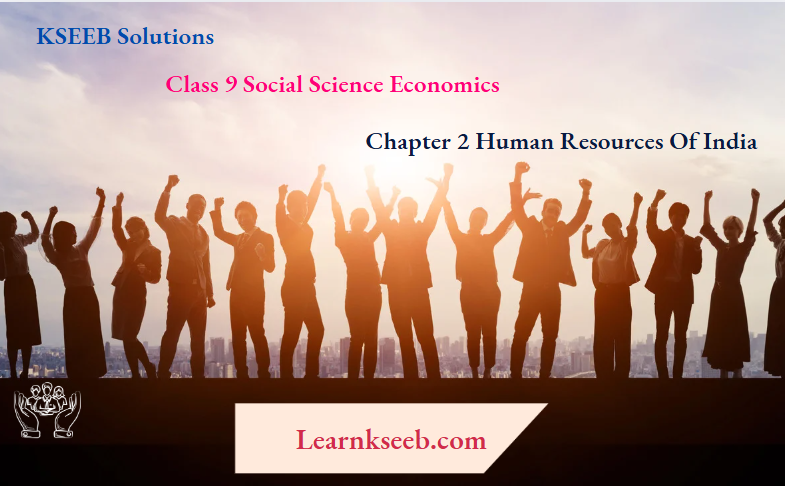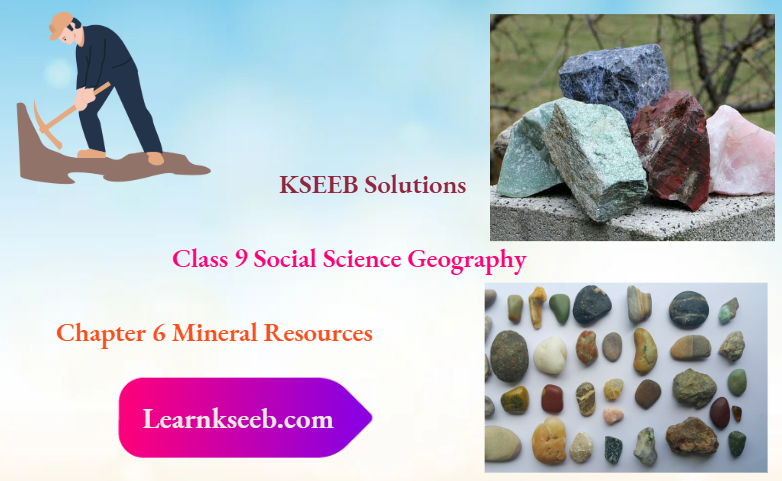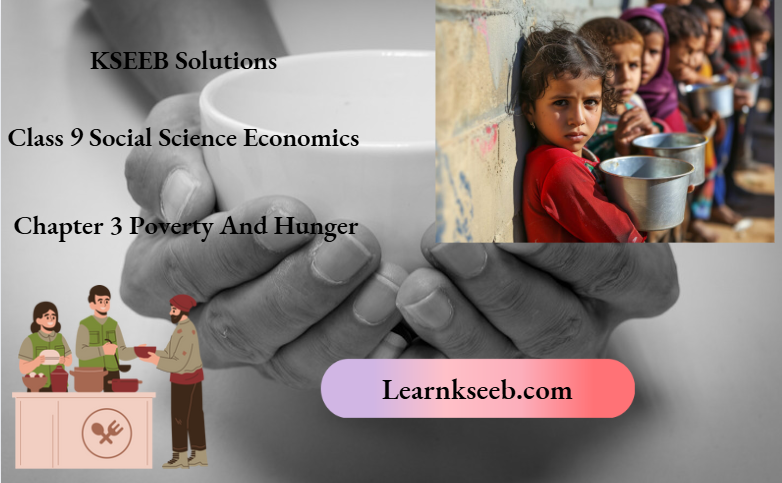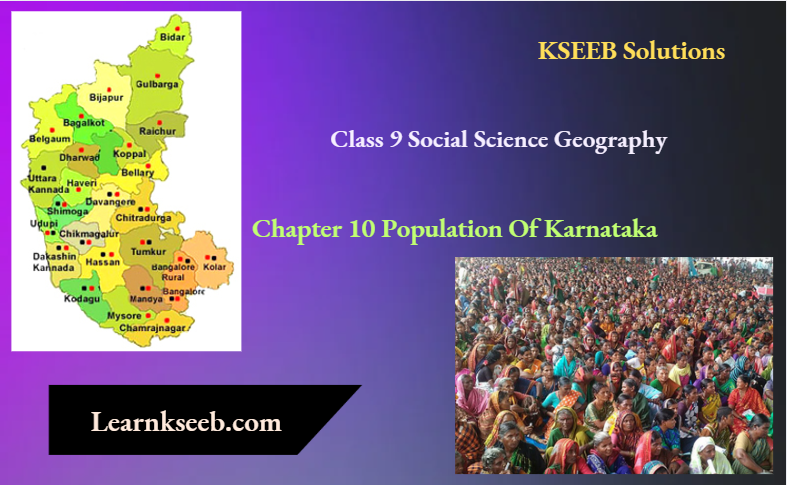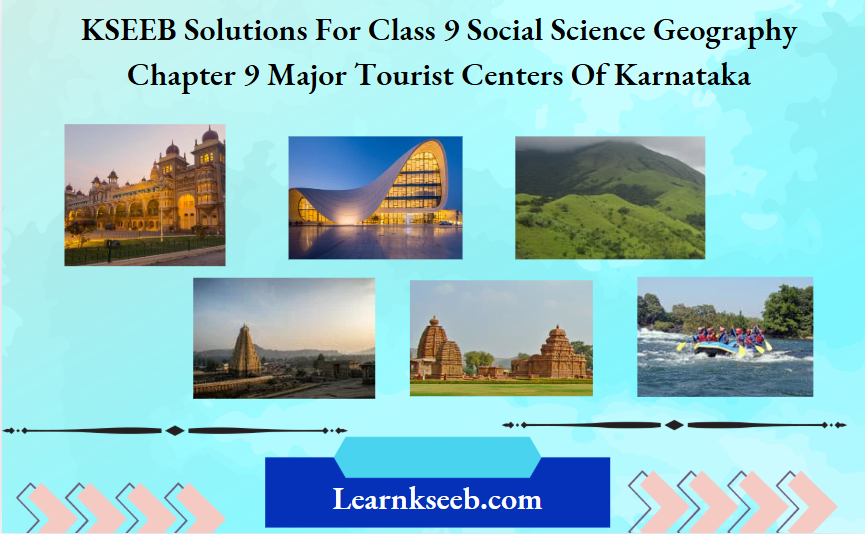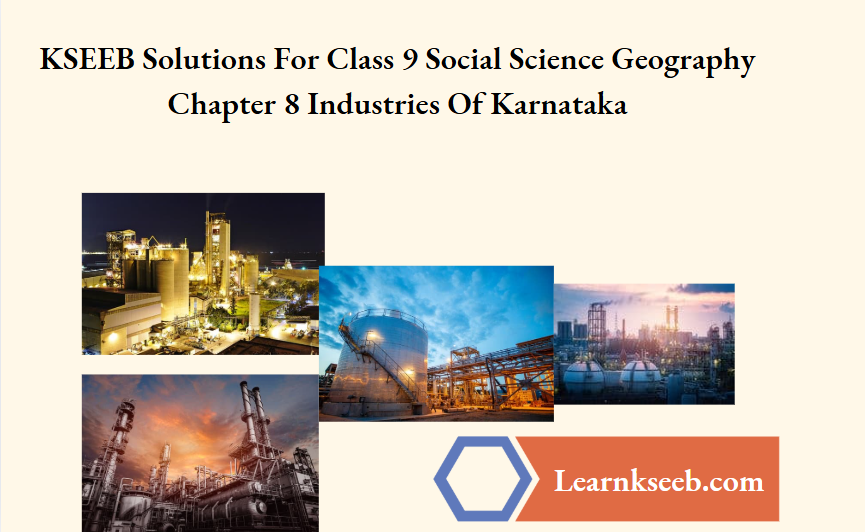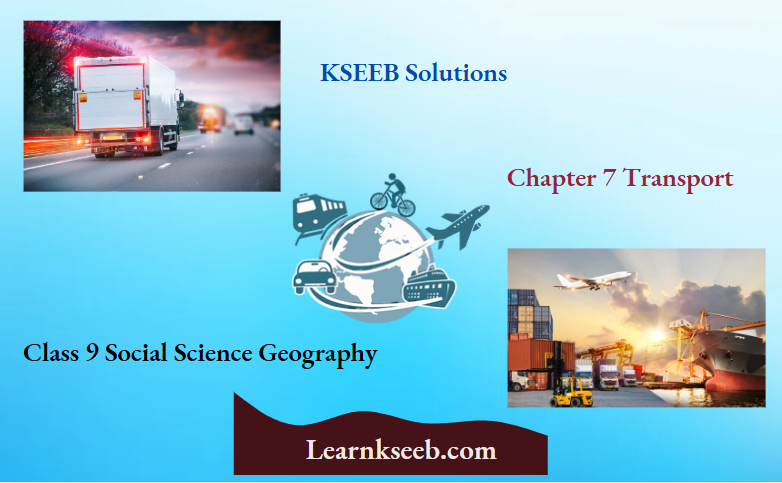KSEEB Solutions For Class 9 Social Science Economics Chapter 1 Natural Resources Points To Remember
Natural resources are naturally occurring substances that are considered valuable in their natural form. Natural Resources are generally classified as falling two types namely Renewable and non-renewable resources. The natural resources which get replenished as we use them are called renewable resources. Example: Water, land, forest, air, etc. The natural resources which get depleted as we go on using them are called Non-renewable resources. Examples: coal, petroleum, natural gas, etc.
- Resources can also be classified as biotic and abiotic resources.
- The resources which are derived from living organisms are biotic resources. Example: plants and animals.
- The resources which are derived from non-living components of nature are abiotic resources. Example: Water, soil, minerals
- The main factors of increasing scarcity are overpopulation, growing industrialization, expanding urban areas, atmospheric pollution, water pollution, and land degradation.
- Conservation of natural resources means not wasting them but using them judiciously so that there is a balance between nature and our use of natural resources.
- Conservation of resources can do it by adopting the 4R strategy. They are:
- Reduce,
- Reuse,
- Recharge and regenerate
- Research.
- The World Wildlife Fund has devised a measure called the ‘ecological footprint’ which gives an idea about the extent of consumption of resources and waste generation by a country or by an individual in a country.
- WWF defines a country’s ecological footprint as “ the sum of all the cropland, grazing land, forest and fishing grounds required to produce the food, fiber, and timber it consumes to absorb the wastes emitted when it uses energy and to provide space for infrastructure.
- Mahatma Gandhi stated that “ Be the change you want to see in others”
| Class 9 Social Science | Class 9 Science | Class 9 Maths |
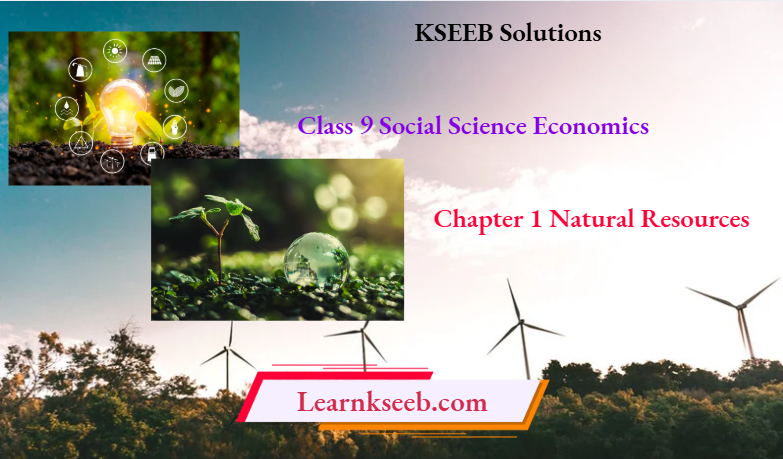
Natural Resources Textual Questions And Answers
Fill in the blanks with suitable words:
- Natural resources are the gift of nature.
- Renewable resources reproduce within a specified time span.
- Iron ore is Non- a renewable resource.
- Scarcity arises when the need for resources is more than the availability of them.
- Development emphasizing the availability of resources to meet the needs of future generations is also called the Conservation of resources.
- In 2020, mankind used 50% of Earth to meet their requirements.
Answer the following questions in one sentence:
Question 1. What are natural resources?
Answer: Natural resources are naturally occurring substances that are considered valuable in their natural form.
Class 9 Social Science Economics Chapter 1 KSEEB Natural Resources Notes
Question 2. Give two examples of renewable resources.
Answer: Water, land, forest, air, etc are examples of renewable resources.
Question 3. Give two examples of abiotic resources.
Answer: Soil and minerals are two examples of abiotic resources.
Question 4. What is conservation?
Answer: Conservation of natural resources means not wasting them but using them judiciously so that there is a balance between nature and our use of natural resources.
Question 5. Define ecological footprint.
Answer: WWF defines a country’s ecological footprint as “ the sum of all the cropland, grazing land, forest and fishing grounds required to produce the food, fiber, and timber it consumes, to absorb the wastes emitted when it uses energy and to provide space for infrastructure.
Question 6. What is recycling?
Answer: Using the same resources multiple times is called recycling.
Answer the following questions in 5-6 sentences each:
Question 1. Differentiate between renewable and non-renewable resources.
Answer:
Differences between renewable and non-renewable resources are:
- The natural resources which get replenished as we use them are called renewable resources. Example: Water, land, forest, air, etc…
- The natural resources which get depleted as we go on using them are called Non-renewable resources. Examples: coal, petroleum, natural gas, etc…
Question 2. Explain the causes for the increasing scarcity of resources.
Answer:
The causes for the increasing scarcity of resources are:
- Overpopulation
- Growing industrialization
- Expanding urban areas
- Atmospheric pollution
- Water pollution and
- Land degradation
Question 3. What are the 4Rs? Explain in brief.
Answer:
Conservation of resources can do it by adopting the 4R strategy. They are:
- Reduce,
- Reuse,
- Recharge and regenerate
- Research.
1. Reduce: It refers to minimizing the use of resources and their wastage or trying to use less amount of any resource.
2. Reuse: Using the same resources multiple times is called recycling.
3. Recharge and regenerate: It refers to taking steps to allow the resources to grow through conscious human efforts.
4. Research: Research ways to find renewable alternatives to non-renewable resources.
Natural Resources Class 9 KSEEB Solutions
Question 4. What steps would you take to conserve energy use in school and at home?
Answer:
The steps taken to conserve energy use in school and at home are:
- Put off all lights when not in use
- Turn the air conditioner and heater off at night
- Get outside! Outside activities are fun and take less energy
- Keep door and winds shut when heating and cooling the house/car
Question 5. What measures will you take to reduce the ecological footprint?
Answer:
The measures taken to reduce the ecological footprint are:
- Conservation of food
- Conservation of energy/Electricity
- Judicial utilization of the Transport system
- Creating less waste
- Conservation of water
- Educating community regarding ecological footprint.
Natural Resources Additional Questions And Answers
Choose the correct alternative and write the complete answer along with its alphabet in the answer sheet provided.
Question 1. The resources which are derived from non-living components of nature are
- Abiotic resources
- Biotic resources
- Renewable resources
- Natural component
Answer: 1. Abiotic resources
Question 2.4R strategy related to
- Automobile engine
- Conservation of resources
- Research in science and technology
- Software technology
Answer: 2. Conservation of resources
Question 3.The great leader who stated that “Be the change you want to see in others” is
- Mahatma Gandhi
- Dadabhai Naoroji
- Vishveshwaraiah
- Dr. B. R. Ambedkar
Answer: 1. Mahatma Gandhi
KSEEB Social Science Economics Class 9 Chapter 1 Natural Resources Concepts
Question 1. What are the suggestions to conserve resources?
Answer:
The measures undertaken to conserve resources are:
- Purchase less stuff
- Reduce excess packaging
- Recycling materials
- Purchase products made from recycled materials.
- Keep air and water clean
- Plant new saplings where we cut down trees.
- Using bicycle and public transport
- Conserve energy at home.
Question 2. How can we overcome from increasing scarcity of resources?
Answer:
The suggestions to overcome from increasing scarcity of resources are:
- Exploration and discovery of new sources
- Discovering alternatives and substitutes
- Increasing efficiency of resources
- Regulating overuse of resources and pollution through government policies
- Educating people about the conservation of resources.
KSEEB Solutions for Class 9 Social Science Karnataka State Syllabus
KSEEB Solutions for Class 9 Social Science History
- Chapter 1 Christianity and Islam
- Chapter 2 Medieval India and Political Transition
- Chapter 3 Religious Promoters and Social Kingdoms
- Chapter 4 Vijayanagara and Bahamani Kingdoms
- Chapter 5 The Moghuls and the Marathas
- Chapter 6 Bhakti Panth
- Chapter 7 Europe in the Middle Ages
- Chapter 8 Modern Europe
- Chapter 9 Revolution and Unification of Nations
KSEEB Solutions for Class 9 Social Science Political Science
- Chapter 1 Our Constitution
- Chapter 2 The Union Government
- Chapter 3 State Government
- Chapter 4 Judicial System
- Chapter 5 Indian Election System
- Chapter 6 Defence of the Nation
- Chapter 7 National Integration
KSEEB Solutions for Class 9 Social Science Sociology
KSEEB Solutions for Class 9 Social Science Geography
- Chapter 1 Our State – Karnataka
- Chapter 2 Physiographic Divisions of Karnataka
- Chapter 3 Climate,Soil, Natural Vegetation and Animals of Karnataka
- Chapter 4 Water Resources of Karnataka
- Chapter 5 Land Resources of Karnataka
- Chapter 6 Mineral Resources
- Chapter 7 Transport
- Chapter 8 Industries of Karnataka
- Chapter 9 Major Tourist Centers of Karnataka
- Chapter 10 Population of Karnataka
KSEEB Solutions for Class 9 Social Science Economics
KSEEB Solutions for Class 9 Social Science Business Studies

